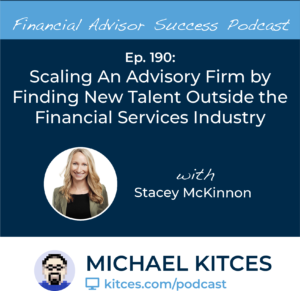A recent Fidelity report showed that a significant portion of investors over 65 moved at least some of their money out of stocks between February and May in response to the turmoil created by the pandemic. The fear and anxiety over the sudden and severe economic uncertainty pushed many investors to dramatically reduce their risk. And unfortunately, once investors take risk off the table, and the market sharply rebounds… there’s no “good” time to get back in. Which in turn has left some advisors asking how they can work with clients who are still stuck sitting on a pile of cash and are now resistant to the idea of re-investing into equities now that they’ve gone up (or in some cases, are unwilling to reinvest into anything at all!?)?
In our 41st episode of Kitces and Carl, Michael Kitces and client communication expert Carl Richards discuss various ways advisors can approach the conversation when a client is resistant to the very idea of taking back on any risk, especially from a market that feels like it’s ‘gotten away’ from them, how to determine if any sudden changes are only in response to recent temporary circumstances (or are more permanent in nature), and why advisors have to be so clear about the services they provide and who they best provide them for.
As a starting point, it’s important to note that just because someone has the financial capacity to take on risk and get back into the markets, doesn’t mean that they should, or that they even need to. Because, for some, their goal all along might have been to get to a point where they don’t have to take on risk, and after working hard for decades, they can get off the “more” treadmill. After all, investing is just one of several levers that are available to help clients reach their goals… it’s just that advisors (understandably) are focused on that one lever in particular, not only given the industry’s long history of providing the investing public with access to the capital markets, but that, especially with the more recent move towards the AUM model, it’s hard for advisors to pay the bills if there’s no “A” to “M” (which means we must be cautious of our own inherent bias towards keeping clients invested!)!
Yet, for clients who do have a reason (and need) to invest to meet their goals, and yet remain extremely risk-averse, there are essentially two approaches. The first is to use a more prescriptive approach, leveraging data and logic to demonstrate the long-term value that investing presents. While that more heavy-handed approach might work for a subset of clients, more often though, the better tack is to engage clients in a co-creative process that begin with a statement of values, which help define goals, and ultimately end out in an action plan in support of those fundamental values. As a result, advisors can help clients circle back around to (or even reevaluate) their values and goals, and walk them through possible trade-offs they might have to make.
Other approaches include having a conversation around why money is important in the first place (because sometimes there’s enough cash on hand to satisfy a fundamental why, and actually defining that can help calm their nerves about letting the rest work for them), and discussing whether or not changes to their savings and investing goals are permanent (as temporary, mid-course adjustments can be managed by incrementally moving back towards the original plan).
Sometimes, though, it turns out that a client just simply does not want to assume any risk whatsoever, which ultimately means that advisors need to get comfortable with the limitations of the advice model (and least if their AUM model means they can’t work with clients who want to stay in cash!), and understand that there are some clients who may need help with planning but don’t want/need the AUM-based services that many advisors provide (and make their livings from).
At the end of the day, there isn’t a one-size-fits-all approach for every investor, but in general, the best approach for risk-averse clients is to go upstream to find the root cause of any sudden changes, review values and goals to make sure everyone is on the same page, and then have a discussion around potential trade-offs that need to be made to implement any changes. By coming to the conversation with a positive mindset, and an objective of reaching a better understanding of a client’s goals (and why they feel that being in cash is helping them achieve those goals… or not?), advisors can serve their needs to the best of their ability… even if that may lead to the ultimate realization that the client isn’t a good fit?

 Welcome back to the 191st episode of Financial Advisor Success Podcast!
Welcome back to the 191st episode of Financial Advisor Success Podcast! Welcome back to the 190th episode of Financial Advisor Success Podcast!
Welcome back to the 190th episode of Financial Advisor Success Podcast!
